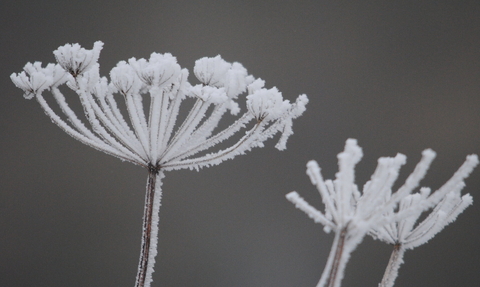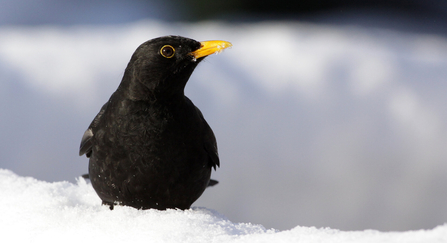
WildNet - Amy Lewis
Wildlife Gardening Tips for December
Winter bird care
Feed
Hang bird feeders and put out food on the ground and bird tables. High quality seed can be bought from Vine House Farm (vinehousefarm.co.uk), with a proportion of profits going to the Wildlife Trusts to support wildlife conservation. You can also put out kitchen scraps such as pieces of apple, stale cake and cheese, but avoid bread and dessicated coconut, which can cause birds to become unwell. To make your own fat balls, melt some fat (lard or suet) and pour into a tub. Mix in the seed and pour into yoghurt cartons or similar to hang from trees or your bird table. Lastly, leave berries on plants such as Holly to provide natural food sources.
Water
Add a bird bath to your garden and make sure it is kept topped up, clean and free of ice. You can also make sure your pond is easily accessible to birds with shallow sloping sides.
Shelter
Empty your nest boxes and give them a good clean to give birds a place to shelter inside in the winter.

© Margaret Holland
Plant a native hedge
Planting a native hedge is a brilliant way to divide a garden, define boundaries and hide unsightly features, and they are of great value for wildlife, acting as corridors for movement from place to place and for providing food and shelter. Follow these steps to plant your own hedge:
- Choose some native hedgerow trees to suit what you want, such as Holly, Yew, Hawthorn and Hazel. The best hedges have many different species in them so choose at least four. Choose some evergreen species to provide shelter in the winter.
- Dig over the site, removing all weeds and roots, then mix in lots of well rotted manure to give your new trees the best start.
- To get a nice thick hedge, plant 5 plants per metre in two staggered rows.
- Water well.
- When the trees are a few years old, consider planting climbers such as Honeysuckle and bulbs such as Bluebells.
